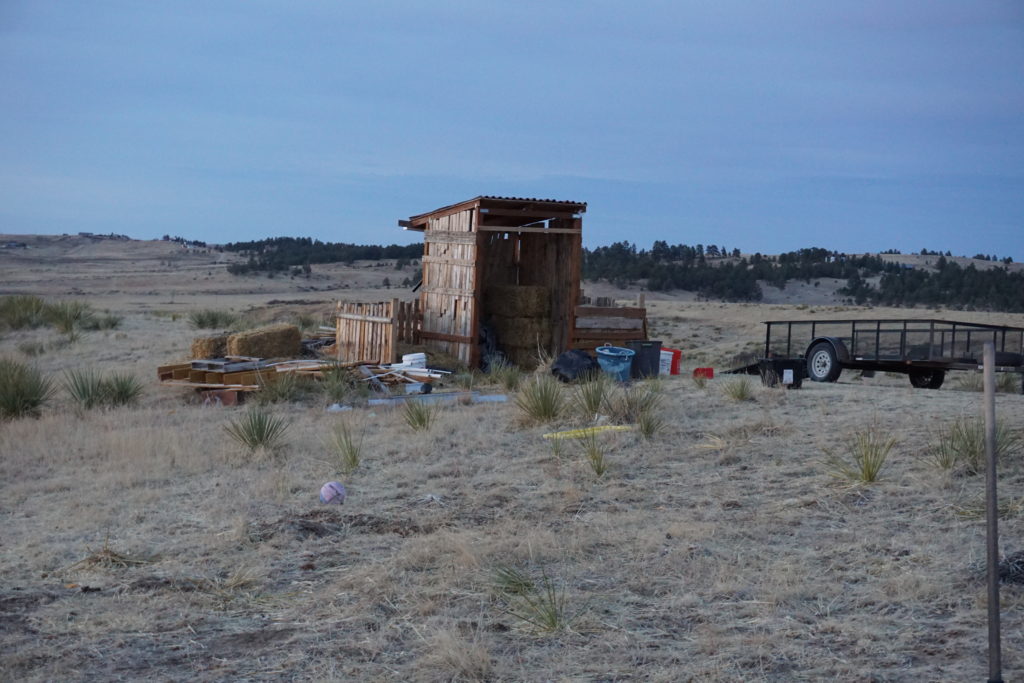
Off-Grid Toilets
During our adventure of living in our off-grid tiny house, one of the many things we have had to learn how to handle has literally been our human waste. Of course this topic is not for the squeamish per se, but in that lies the issue with why more people don’t take an alternative route and change how they do something multiple times a day… if you are regular.
When we first purchased our property we knew one of the first things we would have to address is how to deal with all our excrement while building projects started and we strived to establishing our homestead. We knew we wanted to do some sort of compost toilet as it would be the most sustainable and off-grid option for use. As you look at composting toilets we see one of a couple options.
First, and to me the worst of the options would be a central composting toilet system. This would consist of what looks like a standard toilet in your bathroom which lead to a composting holding tank usually down in a basement or crawl space. These units are fairly expensive and have some definite down sides to it if you are considering it for a tiny house or something similar. The biggest negative is that most tiny house don’t have the space or a crawl space to store the compost holding tank. It is also normally in a basement where potentially it could freeze over in cold environments.

The second type of computing toilet would be a self contained unit. This means the toilet and the composting tank are one unit. (see below) The units can be purchased by different sizes based on the amount of people that will be using it consistently. You can get self contained units that are use limited water or are waterless. These types of composting toilets are usually the best choices for tiny housers and homesteaders because they are all in one so to speak and don’t take up much space and the system only requires little and periodic maintenance. Our issue for using these toilets is that although its a small amount, these composting toilets usually use electrically to run an exhaust fan to keep smells at a minimum and or a small heating unit that essentially bakes the feces into a benign powder that you would discard of. We knew we would be living with solar power only and tried to reduce any electrical consumption where we could.

Another aspect to these toilets are the niche market, so most of them cost at least $1000 so it is definitely an investment if you consider getting one. For many though this is the best option because its simple and easy to manage.
Wondering down the rabbit hole we call the internet somehow we came accross a book named The Humanure Handbook: a guide to composting human manure, by Jospeh C. Jenkins. This book is very interesting and will go as far to say that it is even the shit. In short, the book covers humans history of feces and how we have handled it for better or worse. These outcomes of how we historically handled our feces lead to our current preconception of why “poop” is bad and why you should not handle it because it will cause disease and potentially fatal consequences. If you are interested to learn more, I would check out The Humanure Handbook and see what you really don’t know about your own waste. There is a lot of info to learn from and the author himself has been using a humane toilet system for 20 years with pretty amazing results.
The humanure system consists or a 5 gallon plastic bucket, like you can get from any hardware store. The bucket is placed inside a wood box that resembles a simple toilet. It costs maybe $30 to make and is simple enough to maintain. Essentially you use the toilet like usual and after each use, you use a “cover material” to put over the poop and pee. Your continue this process until the bucket is full. Our system has two buckets so when one is full, we cap it off and rotate it so the fresh empty bucket is ready to use. When both buckets are full we take them out to the humanure station.
The humanure composting bins (pictured above), “The Hacienda” as it is called in the book is a simple roof structure to cover humane composting cover such as Hay or Straw as we use, but you can use leaves or wood chips etc. The hacienda has a compost bin on either side and the roof has a small collection system that keeps in a 55 gallon plastic storage tank for catching water and use when cleaning the buckets later. The humanure system works on the premise of any composting system so it needs a ratio of carbon to nitrogen or browns to greens. Each time you use the restroom the poop is technically a “green” nitrogen although it’s brown, and your cover material is your browns or carbon.
When our buckets are full we pull back the cover straw from the last time and dig a small hole in the middle of the pile to add the new buckets into. Once all the buckets have been added we cover the pile with more straw and cover until the next time. We also have a piece of welded wire fencing we keep on top to prevent our dogs, chickens or animals from getting into it. Once an entire compost bin has been filled, we officially cover it with more straw and let it sit for a let a full year. During this time, microorganisms and bacteria are helping break down the material and after a year or so, the material should not resemble or smell anything like poop but like earth. When the pile sits, you start to use the next compost bin while the first one is processing. The new soil product can be used as an amendment on trees and shrubs.
The humanure option was the best choice for us in our situation because we have multiple acres so space is not a requirement and we don’t have nearby neighbors, where a pile of composting poop next to you neighbors fence in the suburbs may not be the best option for some and/or up to code. Also, we are striving to build a homestead and our poop is an input that has a lot of nutritional benefits that can be used on our land. Most composting toilets create a fine powder that is benign so it essentially no longer has any nutritional value to the ground. The biggest difference for most is that there is simply afraid, deterred, or just disgusted by the idea of having to carry buckets of shit and clean them. We have been using this system for about a year a a half so we are planning on using the first “batch” of humanure this spring so I am excited to see how it will turn out. If for what ever reason it does not seem finished, you can just let it sit longer in its bin and let nature do its work.
In the end, many people in the world today don’t have clean water to drink and survive and most of us in the industrialized world don’t know anything different than shitting in clean drinking water so in a sense we felt like we wanted to take control of at least one aspect of our lives and how we can reduce the waste we create and reuse it to connect the circle for a full closed system.
Keep Booming Life!
-Guy

